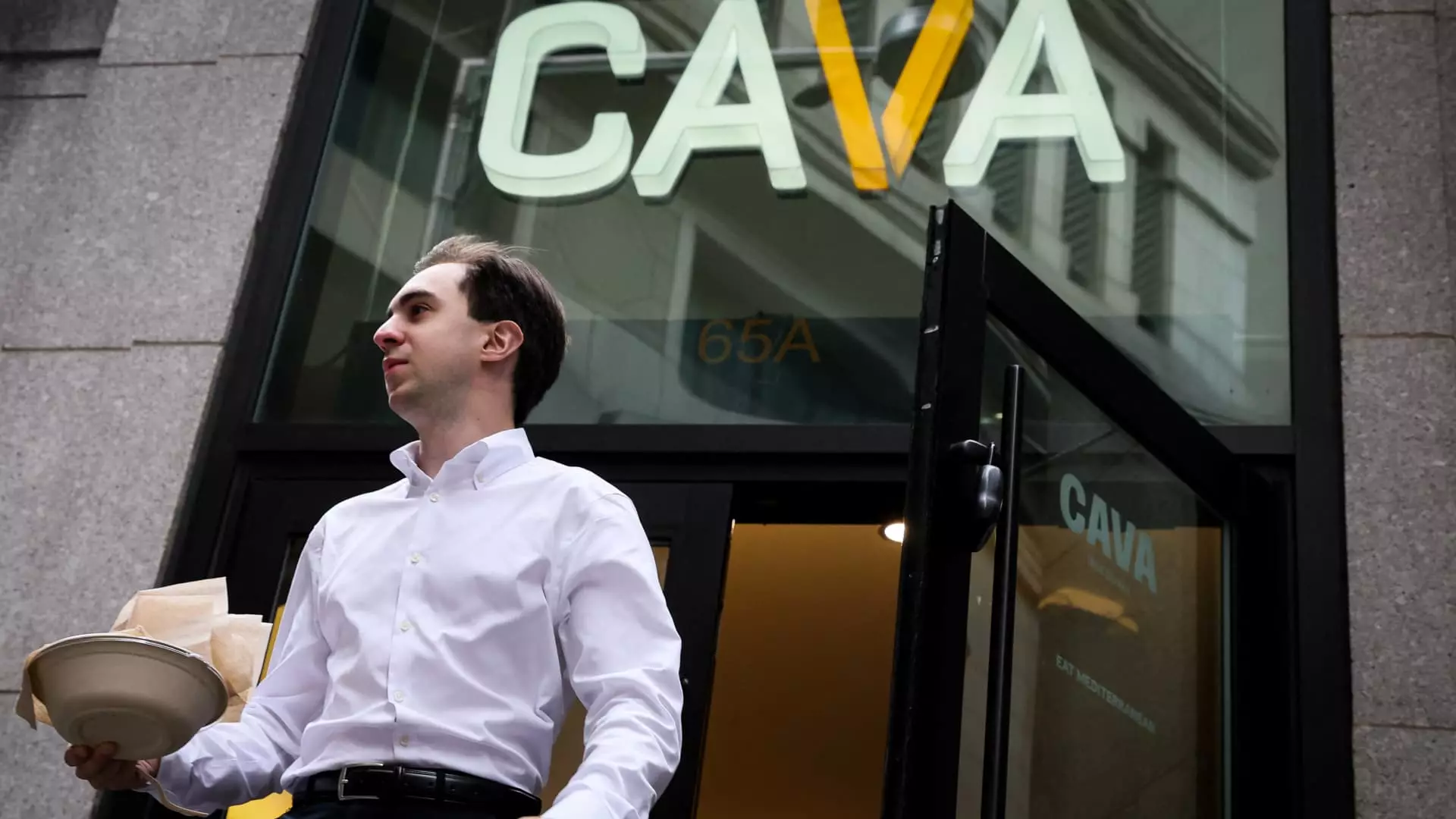In a time when countless restaurant chains are grappling with an uncertain future, Cava stands out as a symbol of resilience. The Mediterranean-inspired fast casual chain reported an impressive 10.8% growth in same-store sales for the quarter ending April 20, a surprisingly upbeat performance against a backdrop of widespread economic trepidation. Consumers, it seems, are gravitating toward higher-quality options, and Cava is reaping the rewards. This is not just about numbers; it’s a significant behavioral shift in consumer spending that merits deeper analysis.
What’s particularly noteworthy about Cava’s success is its ability to attract customers from both ends of the dining spectrum. In a landscape where fast-food giants like McDonald’s and fast-casual competitors like Chipotle are struggling with declining sales, Cava has effectively capitalized on dining trends shaped by the pandemic’s lingering impact. Customers are not merely choosing to dine out; they are opting for experiences that offer perceived value—higher quality meals with fresh ingredients, often at reasonable prices. This elevation in consumer experience could indicate a burgeoning trend that others in the industry would do well to heed.
Understanding the Shift in Consumer Behavior
Cava’s Chief Financial Officer, Tricia Tolivar, highlighted a crucial trend: a notable surge in what the company terms “premium attachment” on higher-priced items. This suggests that while consumers are still cautious about their spending, they are willing to treat themselves to premium options, moving away from cheap fast food to something more refreshing and nutritious. This “trading up” mentality showcases a key insight: today’s consumer is more discerning, valuing quality over merely saving a few bucks.
It is a fascinating paradox that amid economic uncertainty, a wellness-oriented and quality-centric dining model can emerge victorious. Consumers are willing to pay more for what they perceive to be healthier and more satisfying options. Cava has adeptly positioned itself to capture this sentiment, with innovative menu offerings that appeal to health-conscious diners who refuse to compromise on quality.
How Cava Stands Alone
Contrasting sharply with competitors, Cava’s results illustrate the chain’s strategic dislocation from the general malaise of the restaurant sector. While major players are reporting significantly reduced transactions, Cava’s performance paints a picture of upward trajectory; it’s not merely about surviving but thriving. This contrast raises compelling questions about market positioning and targeting: Is it possible that Cava’s focus on fresh, Mediterranean fare uniquely positions it to appeal to the health-conscious and socially conscious diner?
Furthermore, the chain’s plans to open between 64 and 68 new locations signal robust confidence in its business model. This expansion not only reflects the company’s optimism but also an understanding of its market. In a time where others are battening down the hatches, Cava is boldly sailing ahead—an attitude that could inspire other chains to rethink their strategies.
The Bigger Picture
Despite the triumphs, Cava isn’t immune to the whispers of caution echoing around the restaurant sector. The groaning undercurrents of macroeconomic pressures like inflation, supply chain issues, and fluctuating consumer confidence are hard to ignore. While the chain maintains a same-store sales forecast of 6% to 8%, this less ambitious outlook indicates a prudent acknowledgment of the potential headwinds ahead.
The broader implications of Cava’s success should not be lost on stakeholders. The company’s fiscal performance raises questions about the adaptability of different dining models amidst change. Looking ahead, it’s clear that the differentiation strategy—which aligns itself with health trends and premium dining—may offer a roadmap for other brands struggling to find their footing.
Ultimately, despite the looming questions about the economic atmosphere and its effects on consumer habits, Cava shines as an emblem of intelligent adaptation and competitive strategy. It serves as a study in how recognizing and embracing market trends can yield success, even in challenging times. As we continue to explore the evolving landscape of restaurants, the choices made today will undoubtedly define the future of dining.

